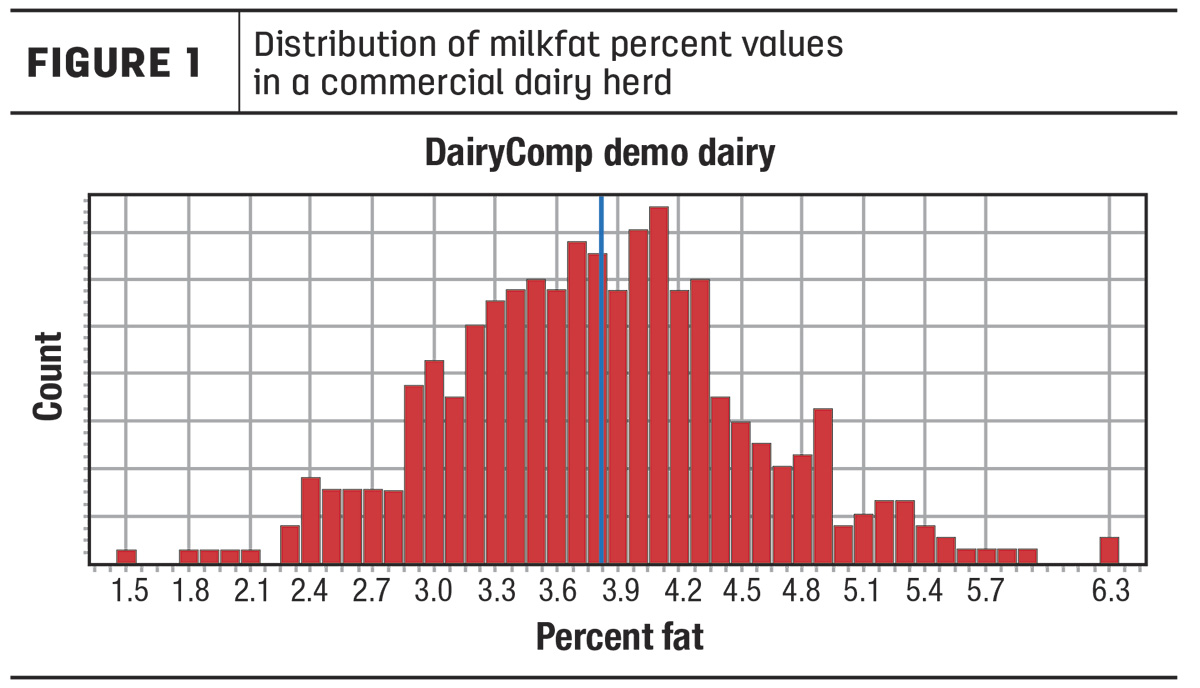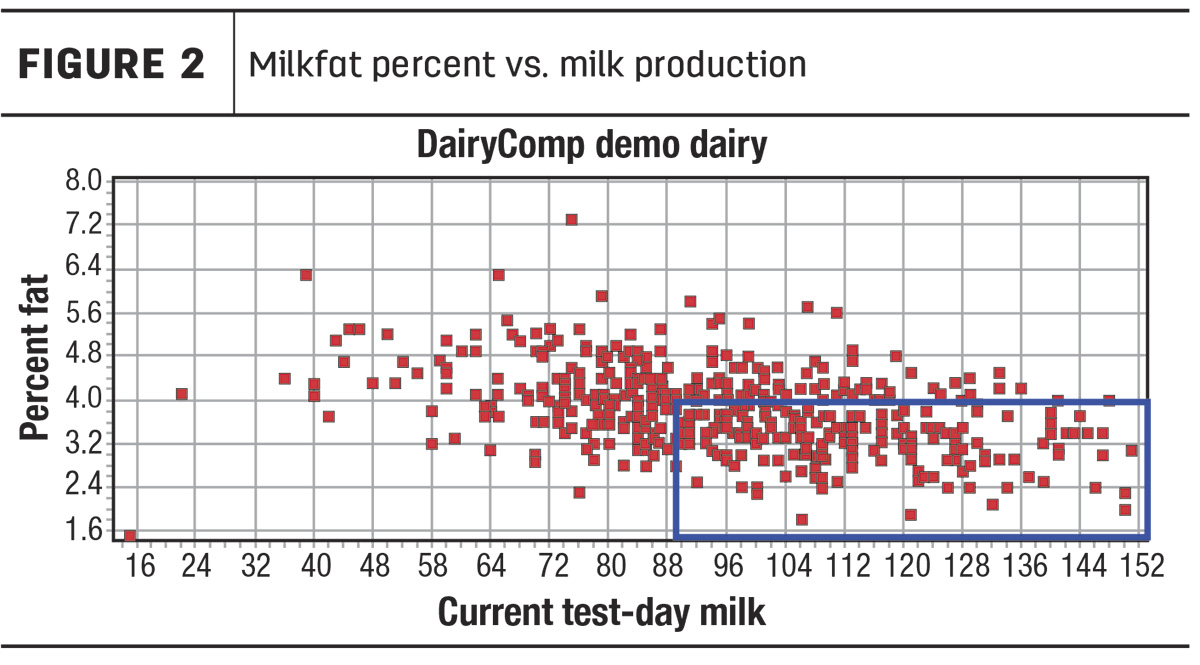Milkfat is the milk component most strongly influenced by nutrition and management practices which, for the thoughtful and proactive dairy farmer or nutritionist, is a good thing. This is because milkfat is also valuable, projected to average $2.70 per pound for the remainder of 2023. An increase of 0.1% milkfat in a herd producing 85 pounds of milk increases farm income by 23 cents per cow per day. The math is undeniably in favor of dairy farmers paying attention to the milkfat their herd is producing.
This might lead us to think we have reached a ceiling, but a closer look at how milkfat varies within a herd can reveal opportunities for further gains in fat percent, yield, efficiency and profitability.
Three points to consider:
- High-producing cows tend to have lower milkfat percentages and tend to be more susceptible to milkfat suppression.
- A significant proportion of cows in commercial dairies are both above herd average for milk production and below average for milkfat percent, making them good candidates to respond to nutrition or management practices that can improve milkfat percent.
- Bulk tank milkfat percentage is an average, providing little or no insight into the distribution of milkfat tests across the herd.
These considerations point to a key fact: To see milkfat production across the herd, you have to look beyond the herd average and instead see individual cow performance. This is because averages don’t tell the whole story, leaving out valuable information that can make a difference in your farm’s profitability.
"Average" means the measure of central tendency in a dataset. The average tells us where most values for a given measurement lie in a distribution or map of the data. In an ideal or normal distribution, the average lies in the exact center of a bell-shaped curve. In practice, most datasets do not fully conform to this ideal. That is also true of the distribution of milkfat percentages in most dairy herds. A generic example is shown in Figure 1 using the demo herd in DairyComp 305, a dairy farm management program.
 The blue box in Figure 2 approximates the cows that are making 90-plus pounds of milk with a fat test of less than 3.8%. In this example herd, this equaled 35% of the cows (165/467). Research from Pennsylvania State University (Penn State) has found that higher-producing cows tend to be more susceptible to milkfat depression (or suppression) and will respond to certain dietary interventions.
The blue box in Figure 2 approximates the cows that are making 90-plus pounds of milk with a fat test of less than 3.8%. In this example herd, this equaled 35% of the cows (165/467). Research from Pennsylvania State University (Penn State) has found that higher-producing cows tend to be more susceptible to milkfat depression (or suppression) and will respond to certain dietary interventions.

The information demonstrated in Figure 2 is only accessible through individual – usually monthly – milk testing. If this testing is not available, then string sampling will provide pen-based information. Using an approved sampling device, individual pens can be sampled during milking to provide a composite milk sample for that pen. Sampling this way for two or three consecutive days per month can provide a milk composition profile that can be used to track changes in milk composition for that pen over time.
If milkfat percent is increased and milk yield remains constant, then you have increased energy-corrected milk (ECM) production. If dry matter intake also remains constant, then you have increased the efficiency of ECM production. Both these measures are associated with greater profitability.
Nutritional considerations
Milkfat comes from two main sources: rumen volatile fatty acids (acetate and butyrate) or from longer-chain (16 carbon and higher) fatty acids that are either absorbed from the digestive tract or made in the body. Digestible fiber (neutral detergent fiber – NDF) is the main driver of rumen acetate and butyrate production and is very important in determining the potential for milkfat yield for a given diet. Several different but related measures are used to evaluate digestible NDF in forages and feed ingredients.
Not surprisingly, the rumen itself impacts milkfat production. Studies at Penn State have shown that feeding sodium acetate, sodium bicarbonate or HMTBa (hydroxy analog of methionine) can help prevent reductions in milkfat that occur as the result of reduced rumen pH and disturbances in the biohydrogenation of unsaturated fats.
Adjusting levels of effective fiber, starch and unsaturated fats in the diet are important determinants of milkfat potential because they affect the production of rumen volatile fatty acids and rumen metabolism of longer-chain fatty acids.
Milkfat percent can also be increased by feeding direct precursors of milkfat in a rumen-stable form, such as palm fat (C16), oleic and stearic (C18) fatty acids. When these fat sources are fed to the cow, about 25% to 35% become milkfat.
Management considerations
Research at the William H. Miner Agricultural Research Institute found that overstocking cows (140%) caused a greater degree of subclinical rumen acidosis than a reduced level of physically effective NDF. Combining these effects often with the third factor of empty feedbunks can create milkfat-depressing conditions.
These milkfat-depressing conditions may come and go in other variations like forages, heat stress or season, but their effects can be reduced through greater attention to feeding management and cow comfort.
Looking critically at milkfat
Milkfat is a valuable commodity and is a reflection of overall rumen health and production efficiency. Take a proactive approach with your nutritionist to find ways to better optimize factors affecting milkfat yield, including taking a closer look at what lies behind the average bulk tank fat test. It is well worth the effort. Ask your nutritionist what measures they suggest using to promote component production in your herd.






